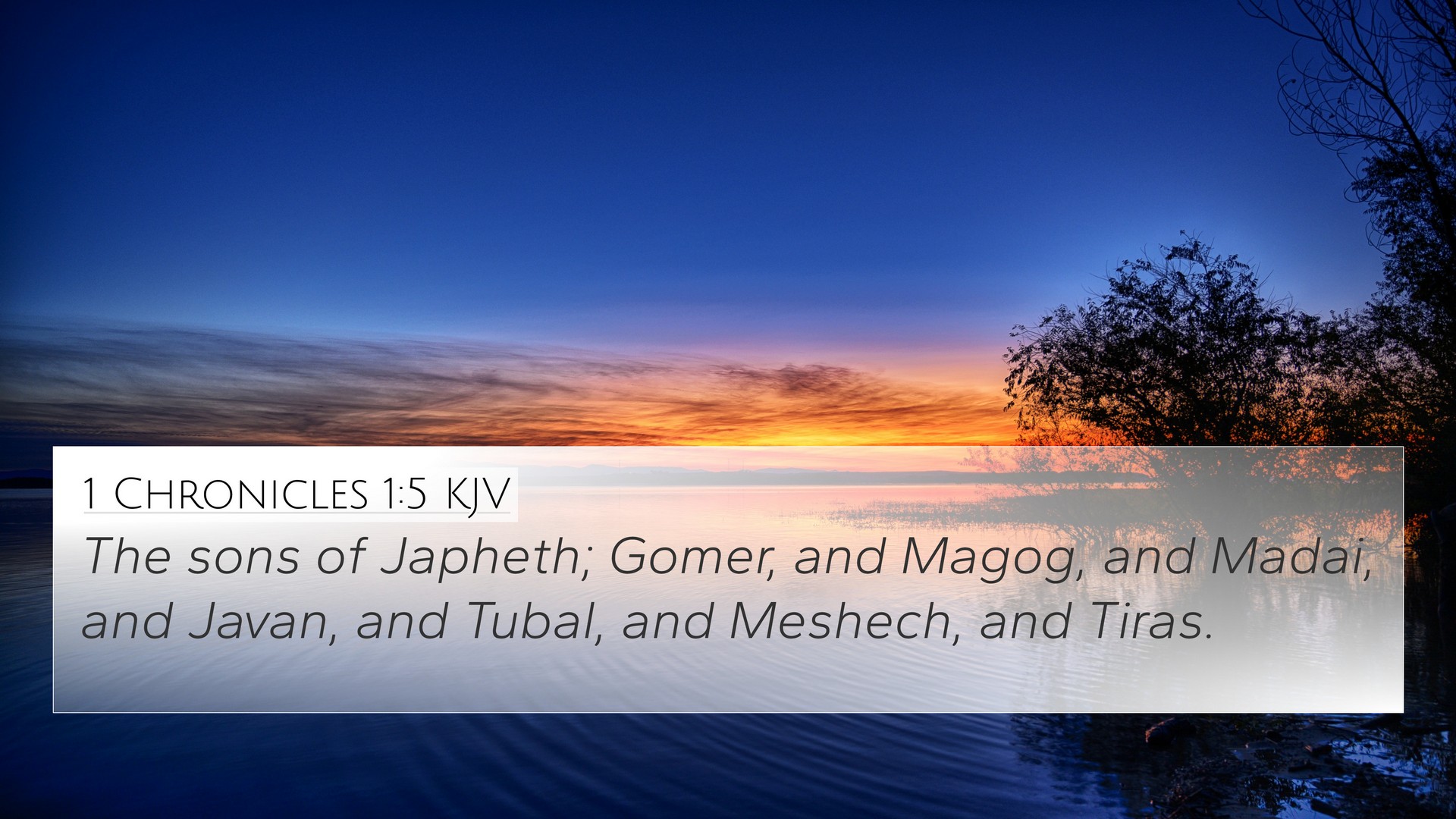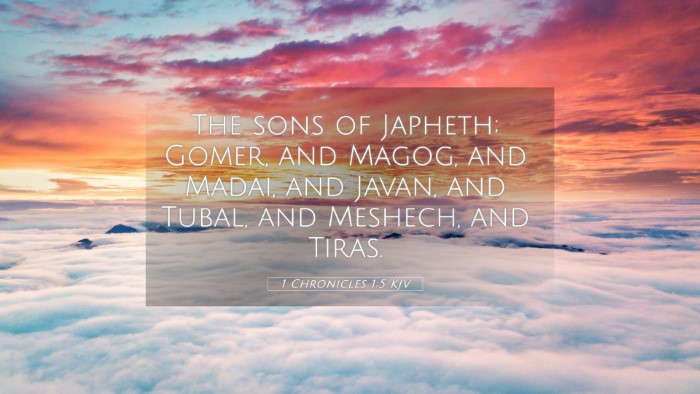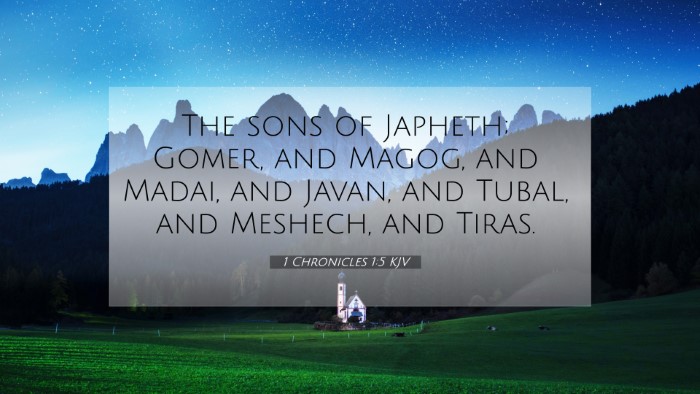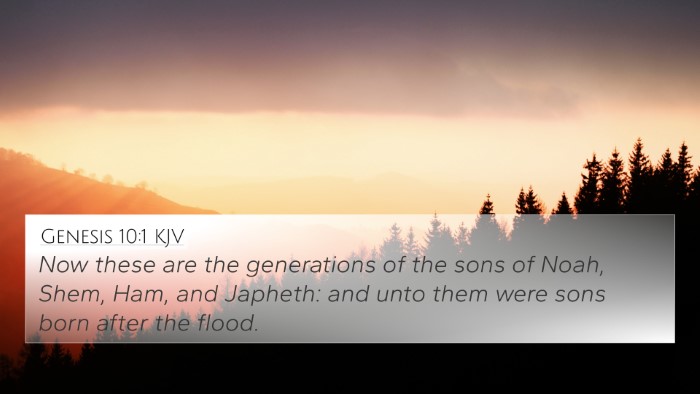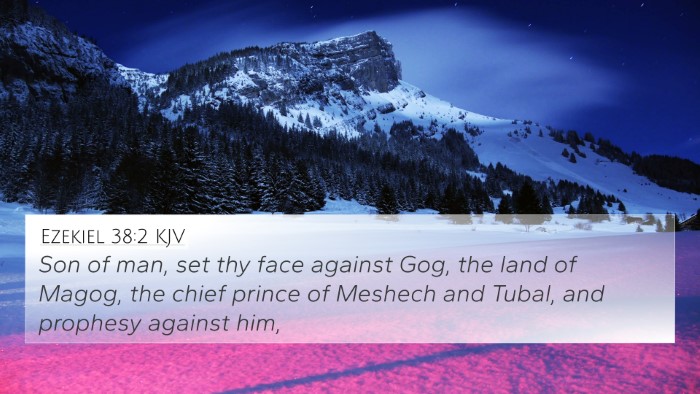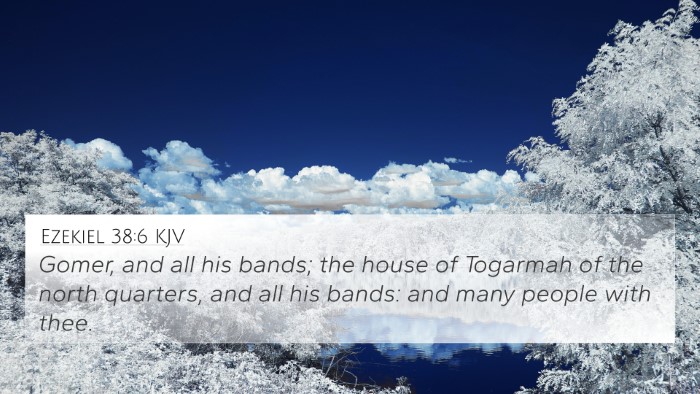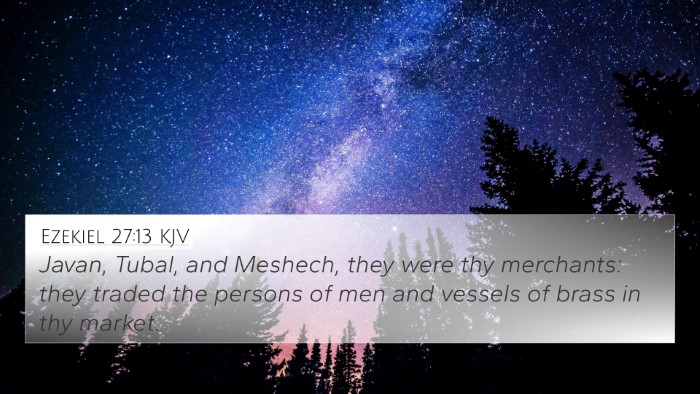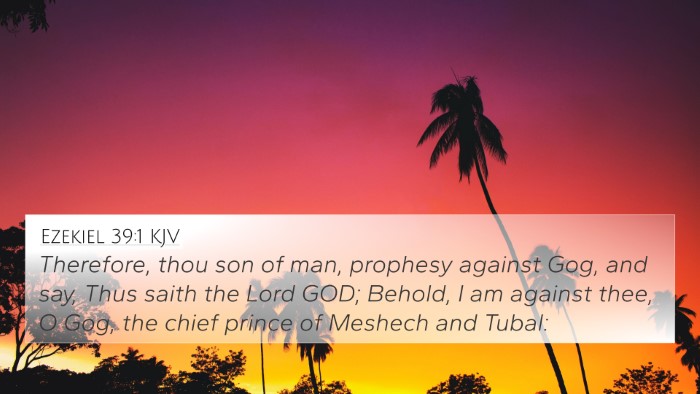Understanding 1 Chronicles 1:5
Verse: 1 Chronicles 1:5 - "The sons of Noah: Shem, Ham, and Japheth. And the sons of the three were: they who came forth from the ark." (Translation based on public domain versions)
Overview
This verse introduces the immediate descendants of Noah, specifically naming Shem, Ham, and Japheth. These names have critical significance in Biblical genealogies, representing different lineages that would later inhabit the earth post-Flood. The verse serves as a foundational point for understanding the ancestry of various nations and peoples described in the Scriptures.
Commentary Insights
Matthew Henry's Commentary
Matthew Henry notes that the mention of Noah’s sons emphasizes the covenant relationship God maintains with humanity after the Flood. He underscores that the order in which the sons are named signifies their roles in the world’s repopulation and how their descendants shape history. The names serve not just as historical figures but symbolize broader groups within humanity.
Albert Barnes' Notes
Albert Barnes highlights the importance of understanding the names listed in this genealogical record. He connects the descendants of Noah with the formation of various nations and cultures, urging readers to consider the impact of these familial lines on the Biblical narrative. His understanding of the verse indicates the significance of lineage in establishing scriptural context and reveals how God’s plan unfolds through generations.
Adam Clarke's Commentary
Adam Clarke discusses the significance of Noah’s sons within the broader narrative of Scripture. He points out that each son and their descendants contribute to the unfolding story of humanity and its relationship with God. Clarke emphasizes the theological implications of the genealogies, suggesting that the preservation of these names and their corresponding lineages demonstrates God’s providence throughout history.
Thematic Connections
- Genealogy and Heritage: The importance of genealogies in understanding Biblical history is highlighted throughout the Scriptures. Verses like Luke 3:36 and Matthew 1:2-16 serve to trace Jesus’ lineage back to Noah’s sons.
- Covenant Promises: The covenant relationship established post-Flood, as seen in Genesis 9:9-17, confirms God’s intentions for humanity and increases the significance of Noah’s descendants.
- Divine Providence: The unfolding of history through the descendants of Noah parallels God's providential care throughout the ages, as reflected in Romans 8:28.
- Global Relationships: The nations descended from Noah are significant to understanding the present-day ethnic and cultural diversity, connecting to verses like Acts 17:26.
- Theological Themes: Themes of judgment and grace can be traced from the story of Noah to the New Testament teachings, evident in 1 Peter 3:20-21.
Cross-References
For a deeper understanding of 1 Chronicles 1:5, consider these related verses:
- Genesis 9:18-19 - Highlights the descendants of Noah and their geographical spread.
- Luke 3:36 - Further genealogy tracing lineage through Noah.
- Acts 17:26 - Discusses all nations arising from one blood, linking back to Noah's sons.
- Genesis 10:1-32 - Expands on the table of nations from Noah's sons.
- Romans 5:12 - Explores the theological implications of sin entering through Adam (and indirectly linking to Noah).
- 1 Peter 3:20-21 - Reflects on Noah's role in salvation history.
- Hebrews 11:7 - Acknowledges Noah’s faith and obedience.
Conclusion
The verse 1 Chronicles 1:5 serves as a pivotal connection point in Scripture. Understanding its implications requires integrating the name and lineage of Noah's sons into the larger narrative of God's redemptive work. The importance of cross-referencing related Bible verses illuminates how deeply intertwined these genealogies are with the themes of covenant, judgment, and grace in the unfolding story of humanity. By utilizing tools for cross-referencing, we can enhance our understanding of these texts and their connections to broader Biblical themes.
